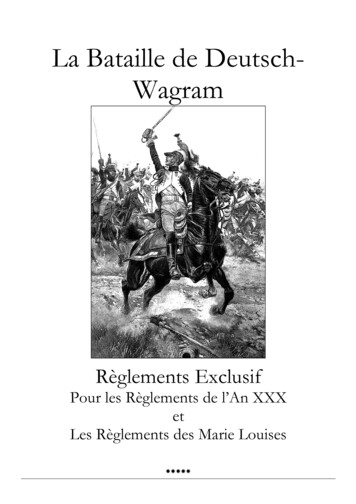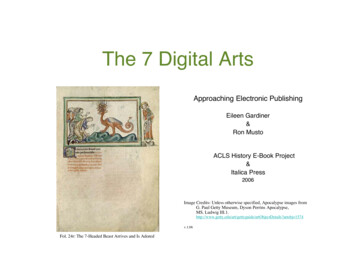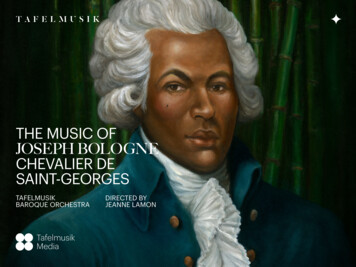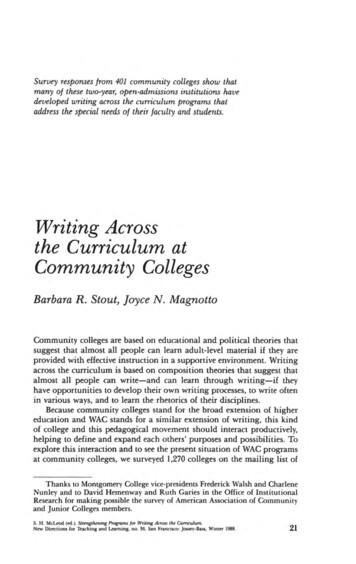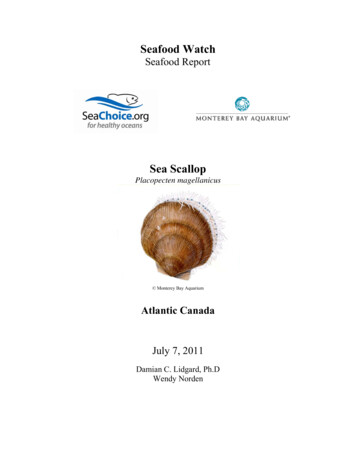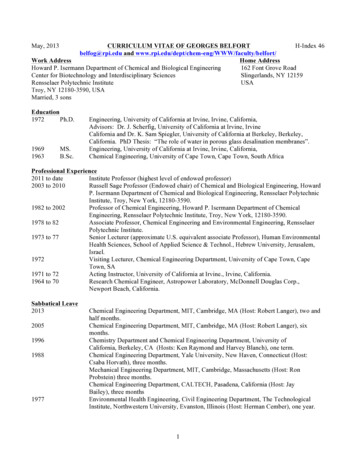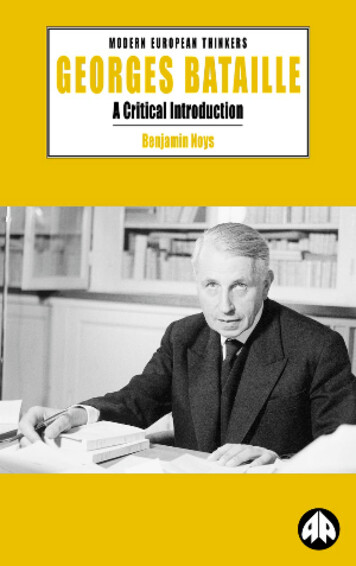
Transcription
Georges BatailleA Critical IntroductionBenjamin NoysPlutoPPressLONDON STERLING, VIRGINIA
First published 2000 by Pluto Press345 Archway Road, London N6 5AAand 22883 Quicksilver Drive,Sterling, VA 20166–2012, USACopyright Benjamin Noys 2000The right of Benjamin Noys to be identified as the author of thiswork has been asserted by him in accordance with the Copyright,Designs and Patents Act 1988.British Library Cataloguing in Publication DataA catalogue record for this book is available from the British LibraryISBN 0 7453 1592 5 hbkLibrary of Congress Cataloging in Publication DataNoys, Benjamin, 1969–Georges Bataille : a critical introduction / Benjamin Noys.p. cm. — (Modern European thinkers)Includes bibliographical references.ISBN 0–7453–1592–51. Bataille, Georges, 1897–1962—Criticism and interpretation.I. Title. II. Series.PQ2603.A695 Z795 2000848'.91209—dc2100–024889Disclaimer:Some images in the original version of this book are notavailable for inclusion in the eBook.Designed and produced for Pluto Press byChase Production Services, Chadlington, OX7 3LNTypeset from disk by Stanford DTP Services, NorthamptonPrinted in the EC by TJ International, Padstow
ContentsAbbreviationsviiiIntroduction11. The Subversive Image182. Inner Experience383. Sovereignty604. The Tears of Eros825. The Accursed Share103Conclusion125Notes and References142Bibiliography153Index161
AcknowledgementsI would like to thank Geoffrey Bennington for his patient supervisionof the DPhil from which this book has developed and for hiscontinuing encouragement of my work. I would also like to thankthe British Academy for the three-year award which made that DPhilpossible and the staff of the Graduate Research Centre in theHumanities at the University of Sussex for their help. I want to thankall the staff at Pluto Press for their belief and support for this book,particularly Keith Reader and Anne Beech. I am grateful to JamesTink and Ben Rumble for reading drafts of this work and theirfeedback, to Matt Fletcher for all his help, and to my family,Diane, Charles, Alison and Danny. Above all I would like to thankJane Gillett, to whom this book is dedicated and without whom itwould have been impossible.vii
AbbreviationsRefer to the major works by Bataille and to The Critical Reader.Accursed Share Vol. 1 (AS1)Accursed Share Vols 2 and 3 (AS2/3)The Bataille Reader (BR)Bataille: A Critical Reader (CR)The College of Sociology (CS)Eroticism (E)Encyclopaedia Acephalica (EA)Guilty (G)The Impossible (I)Inner Experience (IE)L’Abbé C. (AC)Literature and Evil (LE)On Nietzsche (ON)Story of the Eye (SE)The Tears of Eros (TE)Theory of Religion (TR)The Trial of Gilles de Rais (TG)Visions of Excess (VE)viii
IntroductionAll profound life is heavy with the impossible.Georges Bataille (IE, 58; BR, 88)Georges Bataille (1897–1962) is still probably best known as awriter of erotic fiction and as a precursor of poststructuralism, butwhat do we really know about Bataille? During his lifetime he wasa somewhat obscure figure, not widely read but closely supportedby a few important friends: Michel Leiris, Maurice Blanchot,Jacques Lacan and Pierre Klossowski, among others. He lived acontradictory life, both the calm life of the professional librarianand the dissolute life of a libertine. After his death he began to gainpopularity and the readers that he had so desired, but he stillremained obscure. Now Bataille has an ambiguous fame as thewriter of excess; disturbing, shocking, perhaps even mad. In anage that so admires excess Bataille has become more and moreaccepted, even lauded as the prophet of transgression.1 The literaryworks that he published under pseudonyms in order to avoidprosecution for obscenity are now ‘modern classics’ that have beenassimilated into the Western canon,2 and the intensity of his otherunclassifiable writings are reduced to interesting footnotes to theintellectual history of poststructuralism.3The problem with this assimilation and appropriation of Batailleis that it is a profound failure to read Bataille. As we will see Batailledid not seek admirers and he regarded apologists for his work withsuspicion. The promotion of Bataille as a counterculture iconcannot accept that he is still, as his friend Michel Leiris describedhim, ‘the impossible one’ (in CR, 167). Bataille recognised earlyin his intellectual career that he would remain isolated but, ‘Thisisolation, as far as I am concerned, is moreover in part voluntary,since I would agree to come out of it only on certain hard-to-meetconditions’ (VE, 91; BR, 147). Although Bataille has become morepopular since his death he has not left this state of isolation becausemost readers of Bataille have not confronted the hard-to-meetconditions that he imposes. To draw him out of it, to introduceBataille, requires that we try to understand these conditions.Firstly, it will be a matter of finding out what hard-to-meetconditions Bataille imposes on us, his readers. Once this has been1
2GEORGES BATAILLEdone it will then be possible to approach the relation betweenBataille’s life and work, after we have seen how Bataille demandsto be read. For Bataille the life and work of a writer could not beheld apart, and his own writings demonstrate how events in hislife constantly impinge on his work and open it to new forces. It isthese openings between Bataille’s life and work that will lead tothe readings of Bataille in the chapters that follow. Finally, in thisintroduction I want to consider how Bataille leads us into ‘thelabyrinth of thought’ (AS2/3, 370). The labyrinth is Bataille’simage of thought, and it is a labyrinth from which we cannotescape. By leading us into the labyrinth Bataille demonstrates whyit is impossible to appropriate his work and why he still remains avital figure in modern European thought.The hard-to-meet conditions that Bataille imposes on us aremade most explicit in ‘The Use-Value of D.A.F. de Sade (An OpenLetter to My Current Comrades)’, which was probably writtenbetween 1929 and 1930 but was unpublished at the time. Evenhere the conditions are not set out directly but through the questionof how we should read the scandalous and pornographic writingsof the Marquis de Sade. Bataille identified with Sade (1740–1814),the aristocratic libertine who supported the French revolution.Sade was both imprisoned in the Bastille by the ancien régime andin a lunatic asylum after the revolution, as his works weredisturbing to monarchists and to republicans alike. 4 Bataille isconcerned with the nature of the scandal of Sade’s works and howthey can still remain a scandal for us. Moreover, on many pointsBataille’s ‘physics and metaphysics are not essentially differentfrom those of the Marquis de Sade’.5 It is not surprising then thatBataille should link his own fate to that of Sade.So, although Bataille’s essay is ostensibly about Sade, and inparticular ‘the brilliance and suffocation that the Marquis de Sadetried so indecently to provoke’ (VE, 93; BR, 149), it is also areflection on the same effects in Bataille. When Bataille writesabout Sade he is never writing only about Sade but also abouthimself. He is concerned with two dominant reactions to Sade:the violent rejection of Sade’s works and the admiration of Sade’sworks. The first reaction is probably more prevalent and morefamiliar, so familiar that Simone de Beauvoir could write an articleentitled ‘Must we Burn Sade?’ in 1951.6 However, Sade has alsohad his admirers and this was particularly true of when Bataillewas writing. The surrealists had rediscovered Sade, along withLautréamont, as a proto-surrealist. For Bataille it was Sade’s ‘mostopen apologists’ (VE, 92; BR, 148) which concerned him morebecause, as he commented in his later work Eroticism (1957),‘Those people who used to rate de Sade as a scoundrel respondedbetter to his intentions than his admirers do in our own day: de
INTRODUCTION3Sade provokes indignation and protest, otherwise the paradox ofpleasure would be nothing but a poetic fancy’ (E, 180).Those who reject Sade respond better to his intentions than hisadmirers do, because his admirers find, or make, Sade acceptable.They turn the paradox of pleasure, where pleasure for Sade alwaysturns on pain, into a ‘poetic fancy’. Rather than Sade having animpact on how we think about the world his admirers make himinto part of a ‘thoroughly literary enterprise’ (VE, 93; BR, 149).There is little doubt that Bataille had the surrealists in mind whenhe wrote that ‘The behaviour of Sade’s admirers resembles that ofprimitive subjects in relation to their king, whom they adore andloathe, and whom they cover with honours and narrowly confine’(VE, 92; BR, 148). When the surrealists transformed Sade into aliterary precursor they were not only establishing their avant-gardecredentials by appropriating him, they were also making his workavailable as a work of literature. Sade could eventually become apart of the literary canon, and his scandalous works could beimprisoned within the library and the bookshop.Bataille has also faced similar gestures of rejection and appropriation, which is no doubt why he considered so much to be atstake in the reading of Sade. During his lifetime Bataille was firstrejected by the surrealists, being expelled from the group in 1929,and then later rejected by existentialism, when Jean-Paul Sartredescribed him as a case needing psychoanalysis.7 He had alienatedhimself from the two dominant radical movements of French andEuropean intellectual life at the time, condemning himself to amarginal existence. Even when he was admired this admirationled to an unacknowledged appropriation of his work. Lacan woulddraw on Bataille’s writings which analysed the violence essential tosexuality to develop his concept of jouissance, a shatteringenjoyment that is ‘beyond the pleasure principle’.8 Despite usingBataille’s work Lacan did not make direct reference to it, andBataille’s contribution to Lacan’s thought was erased.9 In Chapter1 I will try to recover some of Bataille’s distinctiveness from thisLacanian appropriation.It would be after his death that there would be steady increasein the number of Bataille’s admirers, and all too often they wouldtreat him as part of a thoroughly literary enterprise. Although theseadmirers make powerful claims for the importance of Bataille,comparing him to Joyce or seeing him as the heir of Catholicdecadence,10 this power is still limited to a literary power. We canresist these gestures of rejection and appropriation of Bataille byexamining how he resists them when they are applied to Sade.Bataille was rightly pessimistic about this resistance: ‘In fact eventhe gesture of writing, which alone permits one to envisage slightlyless conventional human relations, a little less crafty than those of
4GEORGES BATAILLEso-called intimate friendships – even this gesture of writing doesnot leave me with an appreciable hope’ (VE, 91; BR, 147).However, although Bataille was without ‘appreciable hope’ hecould not surrender Sade to his admirers any more than we cansurrender Bataille.Firstly, Bataille analysed and tested the limits of the gestures ofrejection and appropriation. He argued that despite the fact thatthey appear as opposites, in fact whether Sade is rejected or admiredhe is actually treated in the same way. When Sade is rejected he isimmediately expelled but when he is appropriated he is firstassimilated and then expelled, and the result is the same in both cases.These processes treat Sade as a ‘foreign body’ (VE, 92; BR, 148)which must be expelled to maintain purity. Rejection is more openabout this act and more open about the horror the foreign bodyprovokes. Appropriation is a more complex gesture which uses theforeign body, first assimilating it and then gaining pleasure fromexpelling it. For those who assimilated Sade he was only ‘an objectof transports of exaltation to the extent that these transports facilitatehis excretion (his peremptory expulsion)’ (VR, 92; BR, 148).This process has also happened to Bataille as well as many other‘extreme’ or ‘transgressive’ writers and artists. They are put to useto produce a controlled pleasure by being appropriated and thenexcreted. In this way we can come to terms with the most extremeworks and actually exploit the scandal they provoke. However, thisappropriation can never completely control the foreign body ormake it completely safe for the cultural market place. The foreignbody that cannot be dealt with is the one that still remains despitebeing expelled. Both Bataille and Sade play the foreign body thatexists on the limit, that cannot be safely contained within or heldoutside. As Bataille explains, these gestures try to excrete Sade butSade offers an economy that wallows in excrement. This will opena thought of the heterogeneous, of ‘unassimilable elements’ (VE, 99;BR, 155), which can neither be rejected nor appropriated.It also means that Bataille cannot be either rejected or appropriated: to reject Bataille is to fail to read him but to become anapologist for Bataille, to celebrate him,11 is also to fail to read him.What Bataille requires is a reading that respects the heterogeneityof his thought, a thought that is of and at the limit. In this book Iwill explore this reading to argue that any introduction to Bataillehas to try and negotiate with his heterogeneity without simplyexcreting it. What we have seen is that we can only arrive at Bataillethrough Sade, because it is Sade who poses the problem of theforeign body. For Bataille there are two tendencies in Sade’swritings: firstly, ‘an irruption of excremental forces’ (VE, 92; BR,148) and secondly, ‘a corresponding limitation’ (VE, 93; BR, 149).These two tendencies are in conflict, with the excremental forces
INTRODUCTION5challenging the limitations that arise from their eruption. The twotendencies are also reflected in the reception of Sade, which hasresponded to the eruption of his writings with limitations by eitherrejecting them or confining them by admiration. Instead Batailleanalyses eruption as the essential movement of Sade’s writings andas the destruction of all limitations. In this way he tries to free Sadefrom the limitations imposed by his readers.The ‘violent excitation’ (VE, 101; BR, 158) of Sade’s workshakes those who reject it and those who try to appropriate it. Itthreatens to overflow the limitations in which they try to confineSade. Bataille is also an irruptive force of violent excitation, andthis accounts for the excitement of reading him. The irruptiveforces which are condensed in Bataille’s works threaten to destroyany reading that imposes a sense on Bataille or tries to place himwithin limits. To do so is to destroy the thought of freedom thatis central to all of Bataille’s work. If we do not read Bataille as athinker of freedom then we do not read him at all. He has to beread between the gestures of rejection and appropriation for theheterogeneity of his writings and the heterogeneity he exposes atwork in all writings to be uncovered. For Bataille ‘the certainty ofincoherence in reading, the inevitable crumbling of the soundestconstructions, is the deep truth of books’ (ON, 184). Bataille’sobjective is to expose all writing to the violent excitation of theheterogeneous and so to force us to confront the impossibility atthe heart of thought.Lived ExperienceBataille noted that ‘Nietzsche wrote “with his blood”; to criticiseor, better still, to test him, one must bleed in turn’ (BR, 334). Tocriticise or test Bataille also requires that we bleed in turn and thatwe experience how Bataille wrote with his blood. Bataille’s life wasa turbulent one, lived out between irruptive forces and their corresponding limitations. I do not intend to provide an exhaustivedescription or chronology of his life but to select irruptive eventsfrom it which overflow into his work.12 These events give us anessential background to the readings of Bataille that follow andplace these in context. However, Bataille’s ‘life’ and ‘work’ cannotbe regarded as separate because he resists the idea that they can befirmly divided when one is a writer. Instead Bataille ruptures thisopposition through ‘lived experience’ (VE, 113), which is anexperience of irruptive forces that flow between the life and work.His own work makes explicit this interweaving of life and work byalways being deeply autobiographical, always written ‘with hisblood’, but in a way that never supposes his own secure identity.
6GEORGES BATAILLEIt sends out shock waves from the forces of lived experience thatflow through it, shock waves that still cause our thought to tremble.The most important early event in his intellectual developmentwas his reading of Nietzsche in 1923, which he described as‘decisive’ (BR, 113). This gave shape to the conclusion, alreadymade in 1914, that his concern would be ‘the formulation of aparadoxical philosophy’ (BR, 113). If Bataille took from Nietzschea taste for a paradoxical philosophy, he would first express thoseparadoxes in the language of surrealism. The style of his earliestwritings is notably surrealist in its fascination with extreme andincongruous juxtapositions, so for example, ‘An umbrella, a sexagenarian, a seminarian, the smell of rotten eggs, the hollow eyesof judges are the roots that nourish love’ (VE, 6). Although Bataillewas using surrealist language, and he always retained a sympathyfor surrealism,13 his writings were more violent and disturbed thanmany surrealist works. For Bataille the dream was not a royal roadto a new superior reality but, as he recorded in a dream during hispsychoanalysis (in 1927), a terrifying encounter with a castratingfather: ‘I’m something like three years old my legs naked on myfather’s knees and my penis bloody like the sun’ (VE, 4).Bataille himself regarded his work from this period as‘disordered’ (VE, 74) and he entered psychoanalysis in 1927because of the ‘virulently obsessive character of his writing’(BR, 114). The analysis helped him personally with his obsessionsbut did not end his ‘state of intellectual intensity’ (BR, 114). Thisintensity would eventually prove too extreme for the surrealistsand in the second surrealist manifesto André Breton denouncedBataille as an ‘excrement-philosopher’,14 a criticism Bataille wouldprobably have considered to be a compliment! Bataille’s analysisof Sade was part of his response to his rejection by surrealism, aresponse that tried to destabilise the identity of surrealism as theavant-garde. One of the important consequences of his break withsurrealism was that he joined up with other dissident surrealists,including Michel Leiris, and together with some conservative arthistorians formed the journal Documents in 1929. Not surprisingly,considering this highly unlikely and highly unstable alliance, thejournal was short-lived.The importance of Documents is that in its pages Bataille woulddevelop his thought of the subversive image that we will discussin detail in Chapter 1. That thought has to be understood inrelation to his violent break with surrealism and to his desire todevelop a paradoxical philosophy. Bataille’s relationship tosurrealism was not simply negative, he had learned a great dealfrom its exploration of ‘images which form or deform realdesires’.15 However, he would also subject it to a series of deliberately provocative readings which would try to expose surrealism
INTRODUCTION7to the excremental forces which it was fast transforming intosaleable works of art. In contrast with this attempt to make artistic,and eventually financial, capital from the image, Bataille wasfascinated with the ‘lightning-flash image’ (VE, 78) that wouldsubvert and overwhelm the viewer. This would be an image outsideof any aesthetic, political or philosophical use, opposed to andsubversive of the propaganda images that would define the 1930s.The experiment of Documents would eventually collapse in 1931but Bataille never lost his fascination with the subversive image.During this period Bataille also had another decisive encounter,this time with the work of Hegel at Alexandre Kojève’s lectureson Hegel’s Phenomenology of Spirit (1934–39). Kojève exposed awhole new generation of French thinkers, including RaymondAron, Alexandre Koyré, Pierre Klossowski, Jacques Lacan,Maurice Merleau-Ponty and Eric Weil, to the power of Hegelianphilosophy. For Bataille it was a traumatic initiation and he wrotethat he felt ‘suffocated, crushed, shattered, killed ten times over’by Hegel.16 It may be that all of his writings after this encountercan be read as a sustained and violent dialogue with the overwhelming force of Hegel. We will see again and again how aninternal debate with, and resistance to, Hegel marks Bataille’sthought. That is why it is essential to sketch here his initial responseto Hegel, because this will be the starting point for all his responses.His first response was to turn the violent effects of Hegel’sphilosophy on his thought back against Hegel. On 6 December1937 he wrote a letter to Kojève, known as the ‘Letter to X’, wherehe stated that ‘I imagine that my life – or, better yet, its aborting,the open wound that is my life – constitutes all by itself therefutation of Hegel’s closed system’ (CS, 90; BR, 296).Bataille used his life as an expression of irruptive forces againstHegel’s desire to control these forces. Hegel’s philosophy dependedon controlling these forces, and its power lay in the extent to whichit admitted these forces into philosophy rather than rejecting them.In particular it was a philosophy that confronted the heterogeneousmoment of death, but only to try and subsume this moment withinphilosophy. Bataille admired Hegel’s audacity in trying to subsumedeath and his lucidity in recognising the threat that death posed toany philosophical system. The problem was that although Hegelhad faced death he ‘did not clearly separate death from the feelingof sadness’ (BR, 289). Philosophy could only confront death in awork of mourning, a labour that gave death meaning. Bataille sawthis as a retreat from death as impossibility and he responded bytaking Hegel further. He refused to subsume death within a workof mourning and instead turned to the ‘practice of joy before death’(VE, 235–9) which he found in customs like the Irish wake or theMexican Day of the Dead, where death is faced with pleasure
8GEORGES BATAILLErather than sadness. By combining the ‘authentic movement’ (BR,293) towards death of Hegel with the ‘blind, pernicious joy’ (BR,290) of the festival he hoped to turn philosophy away frommourning and into delirium.Although I will analyse Bataille’s delirious reading of philosophythroughout this book I am not trying to produce a philosophicalreading of Bataille, and in each case it will be a question of pursuingBataille’s resistance to philosophy. He always pursued this workin a series of communities and of friendships, despite his isolation.Chapter 2 will trace Bataille’s thought of community as it emerges,paradoxically, from inner experience. Here Nietzsche will returnas an essential resource for Bataille to resist Hegel. Bataille notonly thought community but he also experimented withcommunity as a practice, and these experiments had high politicalstakes. Throughout the 1930s Bataille was involved with the extraparliamentary left and its opposition to fascism. He was not aLeninist or a Trotskyite but what the French would later call, afterthe May ’68 events, a gauchiste. A gauchiste is an extreme leftistwho also contests the idea of the revolutionary party in favour ofaction by the masses. For Bataille if ‘insurrections had had to waitfor learned disputes between committees and the political officesof parties, then there would never have been an insurrection’ (VE,162). The political communities with which he was involvedrefused the party form and would be central to his reflections oncommunity.He was involved with the Democratic Communist Circle in 1931and then later helped found Counter-Attack in 1934 at the timeof the Popular Front. Counter-Attack attempted to use the popularenergies that fascism had aroused among the masses againstfascism. Such an attempt was deeply ambiguous, leading to chargesof a surfascisme (super-fascism) which tried to transcend fascism.Although Bataille himself recognised a ‘paradoxical fascisttendency’ (BR, 115) in the group, which was dissolved because ofthis, the positions that he took at this time continue to be used asevidence that he was in some way a fascist or complicit withfascism. These political attempts to discredit Bataille seem to havemore to do with current debates around literary theory (the Paulde Man affair and the Heidegger affair, for example) than anyserious consideration of the depth of Bataille’s resistance to fascismin the face of an often widespread capitulation to it at the time.However, in Chapter 2 I will explore further how Bataille resistsbeing reduced to fascism, as well as how he resists the reductionof thought that occurs in any political reading through a freedomthat is excessive to politics.What Bataille found in these leftist political experiments was adesire to seize power, and this pseudo-Nietzschean ‘will-to-power’
INTRODUCTION9compromised their attempts at liberation. Instead a communitycould exist which desired freedom rather than power, and Batailleand others formed the secret society Acéphale (Headless) in 1936to bring this community into existence. To counter the fascinationwith power in politics Bataille used the model of the sorcerer’sapprentice who releases energies that he cannot control and whichrebound on him (VE, 223–34; CS, 12–23). Acéphale was anattempt to release these energies beyond the control of any heador leader (especially the Führer). It is mostly famous because ofthe group’s plan to carry out a human sacrifice, a plan thatfoundered because its members were willing to volunteer to be thevictim but there were no willing executioners. However, Acéphaleis of more interest than the myths that have grown around it. AsBlanchot wrote, ‘It is, I believe, the only group that counted forGeorges Bataille and which he kept in mind, over the years, as anextreme possibility.’17The war and the Occupation would extinguish these experimentsin community, including the public face of Acéphale, the Collegeof Sociology. The reality of power violently imposed itself on athought and practice that had tried to disperse power. However,the war was also an experience of freedom for Bataille. Hollierwrites that, ‘For Bataille, the war is accompanied by an impression– conceivably a scandalous impression – of lightness.’18 It is alsoat that time, in 1940, that Bataille met Maurice Blanchot withwhom he would remain close friends. Bataille wrote that Blanchotencouraged him to ‘pursue my inner experience as if I were thelast man’ (IE, 61; BR, 90) with the ‘sounds from distant bombs’(ON, 108; BR, 98) around him. This violent lived experiencewould also be an experience of lightness. The combination of anexperience of violence with an experience of lightness would leadto Bataille’s post-war writings on the impossible experience ofsovereignty.In Chapter 3 we will see how Bataille tries to consider a thoughtof violence that is also recognition of the violence of thought. Thisact of thought is exposed to danger because a fascination with theexterior forms of violence ‘can lead to the worst’ (BR, 115). Bataillewill confront the problem of how to analyse violence, especiallybecause it is through the violent breaking of limitations that weare led to freedom. Violence is also a challenge to the limitationsof language because ‘Common language will not express violence’(E, 186). While violence cannot be easily expressed, and we willfind Bataille struggling with this problem of expression in Chapter3, it still remains: ‘Violence never declares either its own existenceor its right to exist; it simply exists’ (E, 188). The war had demonstrated to Bataille not only the dominance of violence, but alsohow violence broke down limits. It offered a violent freedom, but
10GEORGES BATAILLEa freedom that threatened death as the war became a total war thatsystematically erased the distinction between combatant andcivilian. Bataille’s war diaries reveal this process but also thenecessity of thinking violence and how violence is difficult to reduceto the safety of an historical example.Bataille wants to express a violence that is radically beyondlanguage, and he searches for examples of this violence in acts ofsacrifice, in auto-mutilation and in violent criminality. Thedifficulty is that these examples reduce violence back into languageand into a particular historical moment or subject. Violence existssomewhere in the play of the example, existing through examplesbut also ruining the idea of the example through a violent opening.Bataille’s thought and his lived experience exist in this violenttension of violence. Here we are pushed to the limit because it willbe at the limit that we experience freedom: ‘Freedom is nothing ifit is not the freedom to live at the edge of limits where all comprehension breaks down’ (I, 40). To live at this edge, where allcomprehension breaks down, is to live with sovereignty as animpossible experience that combines violence with freedom.Sovereignty has to be understood as a reflection of Bataille’s warexperience, but also as a transformation of that experience. It isnot just a limited response but a response that takes thoughtviolently to its limits.The violent opening of limitations that emerges in sovereignty,and also through lived experience, is developed by Bataille as athought of transgression. Transgression is the violent breaking ofa taboo, often a sexual taboo, and leads to anguish. Chapter 4 isan analysis of how Bataille reveals transgression through sexualexperience. This is not only a matter of theoretical ref
Literature and Evil (LE) On Nietzsche (ON) Story of the Eye (SE) The Tears of Eros (TE) Theory of Religion (TR) The Trial of Gilles de Rais (TG) Visions of Excess (VE) viii. Introduction All profound life is heavy with the impossible. Georges Bataille (IE, 58; BR, 88) Georges Bataille (1897-1962) is still probably best known as a writer of erotic fiction and as a precursor of .
